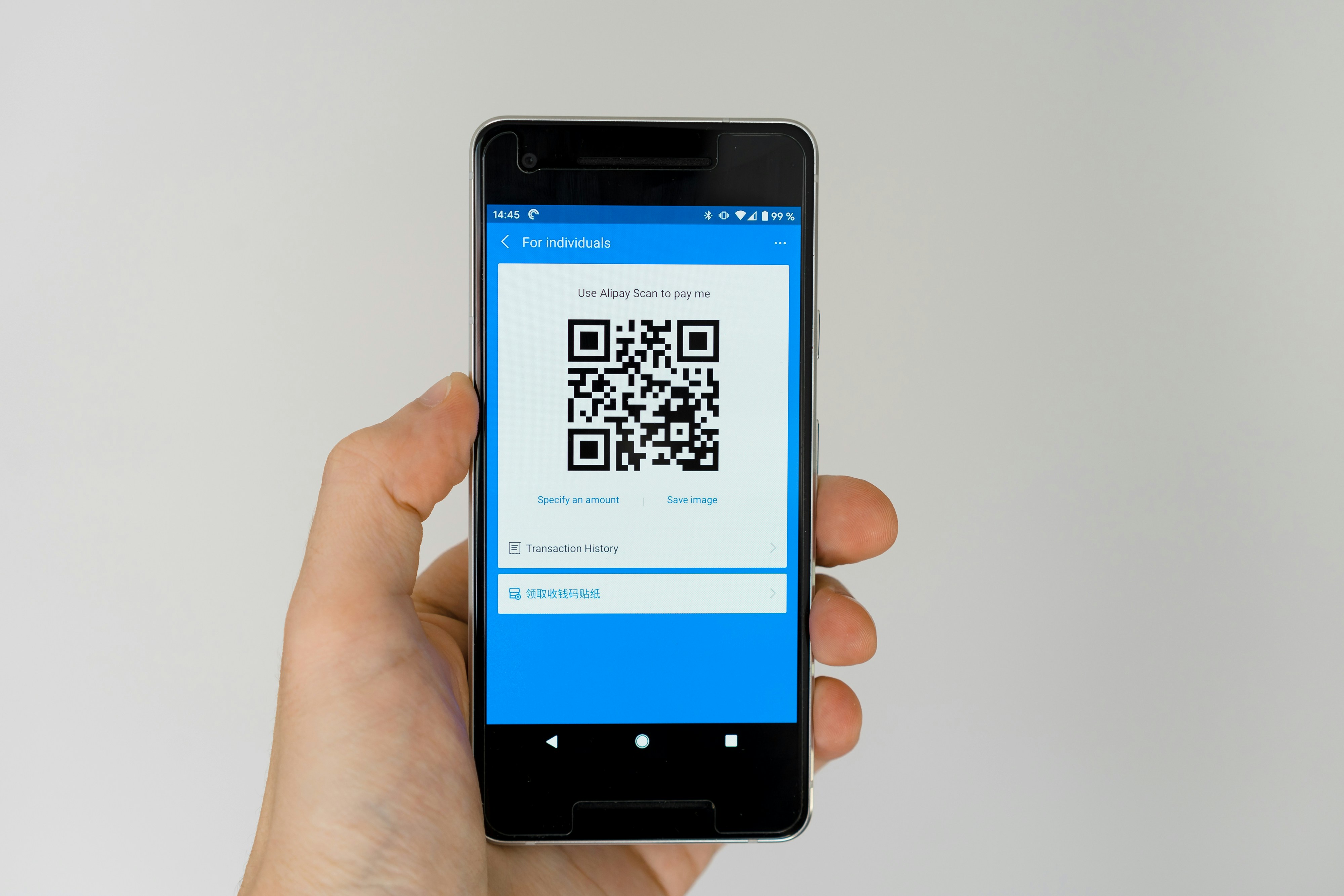Introduction to Barcode APIs
Barcode APIs serve as integral tools that bridge the gap between various software applications and barcode data, enabling seamless access and management of barcode-related information. These APIs provide a structured interface for developers, allowing them to integrate barcode functionalities into their applications without encountering significant technical challenges. At their core, barcode APIs streamline processes such as scanning, decoding, and encoding data, which are crucial for numerous industries that rely heavily on barcode technology.
There are several types of barcode data exchanges facilitated by these APIs. For instance, they can manage data from 1D barcodes, commonly used in retail, to 2D barcodes, which are increasingly prevalent in industries such as logistics and inventory management. Each barcode type carries unique data encoding, and the ability of an API to support various formats enhances its versatility across different sectors. Companies can leverage these APIs to optimize their operations by automating tasks that were traditionally manual, such as inventory checks and sales tracking.
The relevance of barcode APIs extends across various industries, including retail, logistics, and inventory management. In retail, these APIs accelerate point-of-sale transactions and enhance customer experience through efficient inventory management systems. For logistics, they enable the tracking of shipments and ensure the accurate processing of goods as they move through supply chains. Inventory management systems also benefit significantly from the capabilities provided by barcode APIs, allowing real-time updates of stock levels and facilitating better decision-making processes based on accurate data. Consequently, businesses can achieve greater efficiency and accuracy, leading to improved performance and customer satisfaction.
Understanding the Importance of API Security
Ensuring the security of application programming interfaces (APIs) is paramount in today’s digital landscape, particularly for services involving barcode technology. The growing reliance on barcode APIs for various operations, such as inventory management and logistics, has heightened the need for robust security measures. A breach in API security can lead to significant ramifications, including unauthorized access to sensitive data, loss of customer trust, and disruption of business operations.
The potential risks associated with barcode API usage include data breaches, where malicious actors gain access to confidential information, leading to exploitation or financial loss. Moreover, APIs can serve as gateways for attackers, enabling unauthorized access to back-end systems if proper authentication and authorization protocols are not implemented. As a result, the integrity of operations relying on barcodes can be compromised, affecting both the company’s reputation and its bottom line.
Several real-world examples highlight the critical nature of API security. For instance, in 2019, a prominent retail chain experienced a significant data breach due to insecure APIs that exposed customer payment information. The incident resulted in hefty fines, legal repercussions, and a loss of consumer confidence, emphasizing the necessity of effective cybersecurity measures. Furthermore, another case involved a logistics company that suffered operational disruptions due to an API attack, illustrating how security vulnerabilities can directly impact service delivery and efficiency.
Implementing strong security measures for barcode APIs is essential to mitigate these risks. Organizations must adopt practices such as authentication, encryption, and regular security assessments to safeguard their APIs. By prioritizing API security, businesses can protect their data and systems while maintaining trust with their stakeholders, ultimately ensuring the continuity of their operations.
Authentication Protocols for Barcode APIs
When it comes to securing barcode APIs, the implementation of robust authentication protocols is paramount. These protocols serve as the first line of defense against unauthorized access and data breaches. Among the most prevalent methods are token-based authentication, OAuth, and the use of API keys. Each of these methods offers unique advantages and caters to specific use cases.
Token-based authentication is a widely adopted method that utilizes tokens generated after a successful user login. Once a user is authenticated, a token is issued, allowing them to access the API without repeatedly entering their credentials. This not only streamlines user experience but also mitigates risks associated with handling sensitive information. The token can be configured to expire after a certain time, further enhancing security by limiting the window of opportunity for potential misuse.
OAuth, on the other hand, is an open standard for access delegation, frequently used for token-based authentication in web and mobile applications. This protocol allows users to authorize third-party applications to access their data without sharing passwords. By utilizing temporary access tokens, OAuth helps maintain user privacy while granting selective access. Through implementing OAuth, companies can also reinforce their security posture, as it reduces the chances of credential theft.
API keys are another common method for authenticating users. They serve as a unique identifier assigned to each user, enabling API calls to be tracked. While API keys are easy to implement, it is essential to manage them securely. For instance, API keys should never be exposed in client-side code or shared publicly, as doing so could inadvertently open doors for malicious actors seeking unauthorized access.
In conclusion, the selection and implementation of appropriate authentication protocols for barcode APIs are critical to safeguarding sensitive data and systems. By adopting measures such as token-based authentication, OAuth, and secure management of API keys, organizations can significantly reduce the risks associated with unauthorized access and enhance overall security.
Data Encryption Best Practices
Data encryption plays a crucial role in safeguarding sensitive information transmitted through barcode APIs. This practice serves as a fundamental component of information security, ensuring that data remains confidential and protected from unauthorized access. Given the vulnerability of data in transit, it is imperative to employ robust encryption methods that can shield sensitive information from potential threats. Adopting HTTPS for all communications is one of the most effective strategies. Hypertext Transfer Protocol Secure (HTTPS) encrypts data sent between a client and a server, rendering it unintelligible to interceptors. This layer of security is essential for any barcode API that transmits personal or financial information.
In addition to utilizing HTTPS, implementing end-to-end encryption is another best practice that enhances data security. This method involves encrypting data at the source and only decrypting it at the destination, keeping it secure during the entire transmission process. End-to-end encryption protects against various scraping and interception techniques that may be employed by cybercriminals. This system ensures that even if data packets are intercepted, they remain meaningless without the appropriate decryption keys.
Moreover, encrypting data at rest is equally important in maintaining security once the data has been transmitted and stored. Sensitive information, such as user credentials or transaction logs, should be encrypted within databases and storage systems to prevent unauthorized access. This practice safeguards data from internal threats, including unauthorized personnel or potential data breaches that may arise from vulnerabilities within the system. Consistent application of these encryption practices can significantly mitigate risks associated with data leakage and interception, making encryption a vital line of defense in the realm of barcode API security.
Implementing Rate Limiting and Throttling
In the realm of barcode API security, implementing rate limiting and throttling is essential to safeguard applications against abuse and potential attacks. Rate limiting controls the number of API calls a user can make within a specified timeframe, while throttling manages the flow of requests based on current system capacity. Together, these mechanisms help mitigate denial-of-service (DoS) attacks that could disrupt service availability and compromise system integrity.
By establishing limits on API traffic, organizations can ensure fair usage among users and preserve essential resources. Properly configured rate limits allow legitimate users to access the API without overburdening the server, which is particularly crucial as demand fluctuates. For example, an organization may decide to permit 100 requests per minute per user. When the limit is reached, additional requests can be automatically rejected, thereby preventing a potential overload.
Furthermore, the implementation of throttling serves to smoothen the usage patterns across the API, preventing sudden spikes that could lead to performance degradation. For instance, if a user is attempting to send an unusually high volume of requests, a throttling mechanism can temporarily pause or slow down their activity, permitting the system to maintain stability while sustaining ongoing operations for other users.
When determining appropriate rate limits and throttling thresholds, it is critical for organizations to consider their specific application needs, user behavior, and overall traffic patterns. A thorough analysis of historical usage data can provide insights that inform the optimal settings. Additionally, it is advisable to provide users with feedback on their usage status, helping them to understand the limits and encouraging responsible API consumption.
In conclusion, the strategic implementation of rate limiting and throttling is a critical step toward protecting barcode APIs from abuse and ensuring equitable service for all users. These practices are crucial for maintaining the integrity and reliability of API services, ultimately contributing to a more secure data environment.
Monitoring and Logging API Activity
In the realm of API security, monitoring and logging API activity plays a critical role in safeguarding data and systems. The increasing reliance on APIs for various operations necessitates robust mechanisms to track API calls, access logs, and detect any unusual behavior that may indicate potential security threats. By implementing effective monitoring strategies, organizations can significantly enhance their ability to identify and respond to security incidents in a timely manner.
One of the fundamental techniques for monitoring API activity involves employing comprehensive logging solutions that capture essential details of each request and response. These logs typically include information such as timestamps, IP addresses, request methods, response codes, and user identifiers. By maintaining detailed logs, organizations can create an audit trail that enables them to trace any suspicious activity back to its source. Furthermore, leveraging log aggregation tools allows for the centralization of these logs, facilitating easier analysis and reporting.
Detecting unusual behavior is another critical aspect of API monitoring. Organizations can deploy automated tools that analyze traffic patterns and identify anomalies, such as unexpected spikes in API requests or access attempts from unfamiliar IP addresses. By integrating these detection mechanisms with alerting systems, companies can ensure that their security teams are promptly notified of any deviations from normal behavior patterns.
Additionally, monitoring API activity not only aids in threat detection but also ensures compliance with security standards and regulations. Many compliance frameworks mandate logging and monitoring of access to sensitive data, making it imperative for organizations to integrate these practices into their API management strategies. By adhering to these standards, organizations not only protect their data but also build trust with their clients and stakeholders.
In conclusion, robust monitoring and logging of API activity are essential components of an effective API security strategy. By implementing these practices, organizations can detect threats early, respond swiftly, and maintain compliance, thereby ensuring the security and integrity of their systems and data.
Regular Security Updates and Patch Management
In the rapidly evolving landscape of technology, the importance of regular security updates and effective patch management cannot be overstated, particularly for APIs. Security vulnerabilities are frequently discovered in software, and APIs, as essential conduits for data exchange, are particularly susceptible. Regularly updating API software and its dependencies is crucial to safeguard against known vulnerabilities. By implementing a proactive update schedule, organizations are more likely to fend off potential threats that could exploit outdated systems.
To develop a robust patch management process, organizations should prioritize creating an inventory of all API components, including third-party libraries and services. This inventory not only aids in keeping track of updates but also facilitates a more comprehensive understanding of the potential vulnerabilities present in each component. Once the inventory is established, organizations can implement a systematic approach to assess the relevance and urgency of available patches. This evaluation should include criteria such as the severity of the vulnerability, the potential impact on the system, and the complexity of applying the patch.
It is also advisable to adopt automated tools that streamline the patch management process. Automation can significantly reduce the burden on IT teams while ensuring that updates are applied in a timely manner, thereby maintaining an up-to-date security posture. Additionally, organizations should establish a testing phase for patches before full deployment, to verify their effectiveness and ensure that they do not inadvertently disrupt functionality. Furthermore, regular training for developers and IT personnel on the latest security trends can enhance awareness and preparedness, providing an additional layer of defense.
In conclusion, a strategic approach to regular security updates and patch management is essential for maintaining the integrity of APIs. By diligently keeping API software current and rapidly addressing identified vulnerabilities, organizations can significantly reduce the risk of breaches and protect their data and systems effectively.
Adopting Secure Development Practices
Developing secure barcode APIs requires a structured approach to ensure that potential vulnerabilities are identified and mitigated effectively throughout the software development lifecycle (SDLC). One key practice is input validation, which involves meticulously checking all data sent to the API. As barcode APIs are expected to handle various types of external input, ensuring that only acceptable and well-formatted data is processed drastically reduces the risk of injection attacks or other malicious exploits. Utilizing whitelisting techniques for expected input formats can serve as an effective measure in preemptively rejecting harmful data.
Error handling is another critical facet of secure API development. Developers should implement comprehensive error handling strategies to prevent the exposure of sensitive information through error messages. Therefore, it is advisable to provide generic error responses that do not divulge specifics about system architecture or data structure. Additionally, proper logging and monitoring of errors can help identify potential threats while maintaining a secure layer of obfuscation regarding the internal workings of the barcode API.
Furthermore, adhering to secure coding standards is instrumental in preventing vulnerabilities from being introduced during development. Organizations should establish a set of coding guidelines that promote secure programming practices and educate developers on common security pitfalls associated with barcode APIs. This initiative should be complemented by regular security audits and code reviews, which assist in assessing the effectiveness of security measures implemented and uncovering any latent vulnerabilities that may require remediation. Regular assessments reinforce the security posture of the API, ensuring that it evolves alongside new threats and reduces the risk of data breaches or unauthorized data access.
Conclusion and Future Trends in Barcode API Security
In the digital landscape, where data breaches and cyber threats are becoming increasingly commonplace, the importance of robust security practices cannot be overstated. This blog post discussed the critical components of barcode API security, including best practices such as authentication, authorization, encryption, and regular security audits. Implementing these measures is vital for safeguarding sensitive information and maintaining the integrity and reliability of barcode systems.
The future of barcode API security seems poised for significant evolution, primarily driven by advancements in technology. As cyber threats become more sophisticated, the utilization of artificial intelligence (AI) and machine learning is emerging as a promising direction for enhancing security protocols. These technologies can aid in the detection of anomalies and potential threats in real-time, minimizing the response time required to address security incidents. Moreover, predictive analytics powered by machine learning models can help organizations stay one step ahead by identifying vulnerabilities before they can be exploited.
Additionally, the increasing adoption of blockchain technology is expected to bring an added layer of security to barcode APIs. The decentralized and immutable nature of blockchain can enhance data integrity and authenticity, providing a trusted environment for transactions involving barcode technology. This trend could revolutionize how data is managed and secured across various industries, including retail, logistics, and healthcare.
As organizations continue to integrate barcode APIs into their operations, it will be imperative to stay informed about emerging threats and the latest security measures. A proactive approach involving ongoing training, regular updates to security protocols, and investment in cutting-edge technologies will be essential for ensuring the safe and efficient use of barcode APIs in the foreseeable future. Embracing these best practices and keeping abreast of advancements can significantly mitigate risks and protect valuable data and systems.
© barcodly.com- All rights reserved





